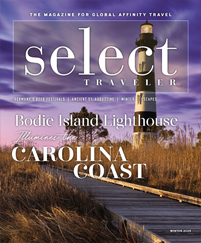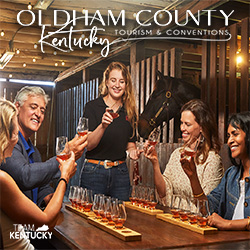You don’t have to go to a museum to see some of America’s best art.
In destinations across the country, public art installations have become a way of drawing people into cities and celebrating the history and culture of the area. From traditional bronze sculptures to modern art, graffiti and murals, the following cities have curated art walks and trails that highlight the many art forms that have popped up in different neighborhoods. The best part: These art trails are all free to explore on your own time and at your own pace.
Rapid City, South Dakota
Public art has become a staple in Rapid City, South Dakota. It started in 2000 when private donors built and installed life-size bronze sculptures of every president of the United States that is no longer in office. The sculptures stand on every corner of downtown Rapid City. The sculptures are placed in an orderly fashion “that eliminates favoritism or political gain,” said Julie Schmitz Jensen, president and CEO of Visit Rapid City.
The City of Presidents can be seen as part of the Rapid City Historic Tour or on an art walk. Visit Rapid City has a brochure, a scavenger hunt and a self-guided walking tour of the installation. The most recent sculpture, Barack Obama, sits on the corner of Fourth and St. Joseph streets, a block away from Benjamin Harrison and George W. Bush.
Another public art installation in Rapid City, Art Alley, started in 2003 with various city artists putting up canvases of their art in the alley. Now, artists need to get a permit to paint in the alley, and most of the art is spray-painted on the walls and dumpsters.
“You can hear garbage trucks, delivery trucks and spray cans shaking in Art Alley,” said Schmitz Jensen. “It is simply beautiful.”
The alley covers two full city blocks, and the art is constantly changing, so returning visitors will always be delighted and surprised.
St. Louis
The Laumeier Sculpture Park sits on 105 acres in St. Louis County and features 60 to 70 large-scale outdoor art installations situated along 1.4 miles of walking trails. Opened to the public in 1976, the park began as a bequest from the Laumeier family, which originally owned the property. The family gave it to the County of St. Louis, asking that it be turned into a sculpture park.
Initially, the sculptures were all created by artist Ernest Trova, who gifted the park 40 of his works. But as the nonprofit arm of the organization was incorporated, the decision was made to expand the park’s scope to include other artists as well.
The park is still primarily dedicated to outdoor sculpture, but in 2016, it added the Adam Aronson Fine Arts Center, a gallery dedicated to showcasing works that weren’t meant to be displayed outdoors, like paper crafts and paintings.
The sculpture park is ever-changing, with a mix of permanent works and temporary exhibitions, said the park’s executive director Lauren Ross. The art is scattered along dirt, gravel and paved trails that wend their way through the park’s open grassy fields and dense woodlands.
“It’s a beautiful place,” Ross said. “I think it is really magical. We’re really special. We are a park-and-museum hybrid. We attract nature lovers and art lovers. I think that sometimes we have the ability to draw people in for one of those things only to discover they are more engaged with the other than they expected.”
Chicago
Visitors to the Chicago Loop have a chance to see free public works of art by some of the most famous artists of all time, including Picasso, Miro, Calder and Chagall. The Flamingo, a 53-foot-tall red sculpture by Alexander Calder, sits in Federal Plaza. The Chicago Picasso is an unnamed 50-foot-tall steel sculpture in the civic plaza that was the first major public artwork in Downtown Chicago. It was dedicated in 1967.
Cloud Gate, lovingly nicknamed The Bean, is one of Chicago’s most iconic and memorable public art pieces because it looks like a large mirrored bean. It sits in Millennium Park.
Nearby, the Crown Fountain features 50-foot-tall video boards that sport the faces of regular Chicago residents spouting water at each other. Built in 2004, it was designed by Spanish artist Jaume Plensa. The installation is popular, especially in the summer, as residents and visitors alike flock there to cool off on a hot day.
Large public art installations pepper the city’s core, known as the Loop, but Chicago has gotten into more local-scale art in the past few years through its Activate program, which takes over unconventional spaces like loading docks and alleys with pop-up art exhibits, music and live performances.
“What we have tried to do is create a lasting impact,” said Kalindi Parikh, director of planning for the Chicago Loop Alliance. “Many murals of all different sizes and all different kinds of artists.”
New murals pop up all the time, including a large Muddy Waters mural on State Street. Visitors interested in seeing these murals can visit the online mural registry put together by the city’s Department of Cultural Affairs.
Visitors who would like to tour the Loop’s public art with a knowledgeable guide can sign up for a free Chicago Greeter tour through Choose Chicago. The tours last two to four hours and can be customized to focus on an individual’s interests, including architecture, public art and foodie culture.
Boston
Everywhere you look in Boston, you will see some form of public art, whether related to the city’s Revolutionary War past or the founding of our country.
Visitors who have a hankering to see the city’s more than 500 public art installations can follow along on Boston’s interactive public art map. A large cluster of art is situated around Boston Common and Public Garden, bordered by Beacon, Boylston and Park streets and is easy to walk. The bulk of Boston’s public art is between the Back Bay/Beacon Hill area and central Boston.
“Public art has the ability to revitalize neighborhoods and foster community collaboration and engage people in conversations that they might not otherwise have,” said Kara Elliott-Ortega, chief of arts and culture for the city of Boston. “We’re committed to bringing more accessible artworks to every neighborhood in Boston.”
One of Boston’s most well-known sculptures, Quest Eternal, shows a 27-foot-tall man reaching for the heavens in a pose reminiscent of floating or flying. It was sculpted by Donald De Lue in 1967 and is located in Allston.
Boston doesn’t have a city-sponsored public art trail per se, but the Mayor’s Office of Arts and Culture is working to integrate more pieces of public art into every neighborhood. The Boston Art Commission developed a curatorial vision to guide the commissioning of new artworks. Boston also is commissioning long-term projects through its Percent for Art Program, which allocates 1% of the city’s capital borrowing budget to public art. Boston also commissions several murals and temporary projects every year as part of its Transformative Public Art Program.
New Orleans
The Big Easy is no stranger to the arts. Well known as the birthplace of jazz, New Orleans also has a proud public art history. William Andrews, director of the Ogden Museum of Southern Art, said there are a few must-see public art areas in the city. New Orleans City Park is full of public art, including the Sydney and Walda Besthoff Sculpture Garden at the New Orleans Museum of Art. The garden sits on 11 acres in the heart of the park, next door to the art museum itself. The more than 90 sculptures are displayed among mature trees, including oaks and magnolias, and two lagoons.
The garden has doubled in size since its inception in 2003. Many famous artists have works of art featured along the garden path, including Frank Gehry, Larry Bell, Katharina Fritsch and Tony Cragg. At the Louisiana Children’s Museum, which also is in City Park, a unique fog sculpture by Japanese artist Fujiko Nakaya sends out a dense mist every 30 minutes, enveloping visitors to the lagoon outside the museum in wispy wet tendrils. The sculpture changes with the weather. The Wave of the World by Lynda Benglis is another must-see art installation in the big lake in City Park. Fans of Dale Chihuly can visit his Rose Crystal Tower in the New Orleans Botanical Garden in City Park.
On the way to the Poydras Sculpture Exhibition, visitors can walk past many murals in New Orleans’ central business district. The Poydras exhibition features 33 sculptures by local and international artists on Poydras Street between Convention Center Boulevard and South Galvez.









